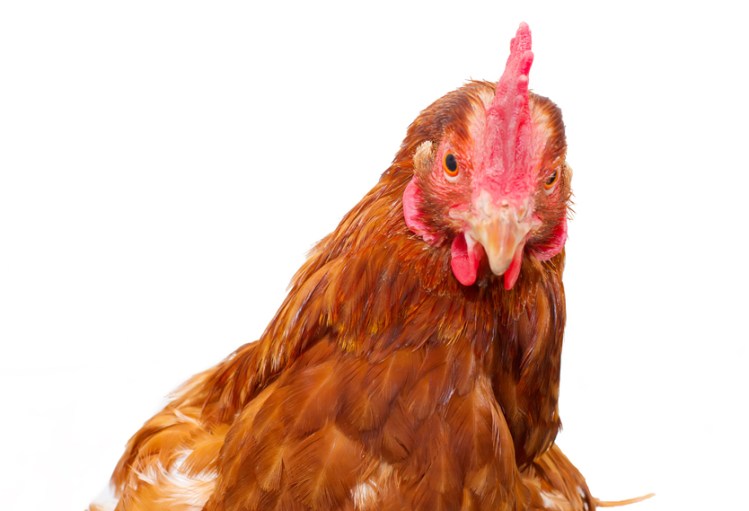The backyard chicken trend that has taken hold of America has a lot going for it, occasional neighborly disputes notwithstanding. The eggs are fresh, it’s clear where they came from, and raising fowl is educational for children.
But it’s also causing an “emerging public health trend” in the form of increasing salmonella outbreaks, the Centers for Disease Control and Prevention reports.
It doesn’t help that, according to the available data, a not-insignificant share of poultry-keepers kiss their chickens and allow them into the living room. These head-scratching findings are among the “high-risk practices” occurring as what once were production animals “are increasingly being considered household pets,” a new CDC study said.
Salmonella infections can make people very ill and, in rare cases, cause death. They originate with bacteria that hang out in animal intestines, enter the world via their feces and are usually transmitted to people through contaminated water or food. But recent outbreaks in the United States have implicated contact with live poultry as a growing source, and healthy chickens are known to shed salmonella bacteria, so the CDC scoured various databases and studies to determine the role of all those crafty coops in the problem.
Here are some of the basic findings:
• From 1990 to 2014, there were 53 “live poultry associated salmonella” outbreaks that sickened 2,630 people, hospitalized 387 and killed five.
• About one outbreak occurred each year from 1990 to 2005.
• That rose to about four outbreaks a year from 2005 to 2014.
• About 6 in 10 patients said they’d been exposed to baby poultry, and 74 percent said that exposure happened at home.
And here are some of the more surprising figures. Of those exposed to baby poultry, these are the percentages of patients who reported:
• Snuggling baby birds: 49
• Kissing baby birds: 13
Nearly half – 46 percent – of patients said they allowed live poultry in the house. Of those, these are the percentages who kept fowl:
• In the living room: 22
• In the kitchen: 12
• In the bedroom: 10
• In the bathroom: 10
No word, unfortunately, on whether cuddling and kissing took place in the bedroom.
About half of those who took the “mi casa es su casa” approach to their chickens reported having owned their birds for a year or less, the study said, which suggests inexperience might have something to do with their unfamiliarity with “appropriate husbandry practices” (though a slightly greater percentage said they knew about the link between poultry and salmonella). The authors of the study also surmised that some people might bring chicks inside in the winter out of fear their fluff will not stand up to the cold.
But the authors were also categorical in their opposition to this practice: “Poultry should never be allowed inside the house,” they wrote.
They stopped far short of warning people off keeping backyard flocks. All in all, the study concluded, poultry owners – especially children, who most often get salmonella – need to regularly wash their hands and be aware that even robust-looking birds can shed salmonella. And health-care workers, veterinarians, pediatricians, hatcheries, feed stores and other key players in this field need to spread the words about the risk.
Send questions/comments to the editors.


